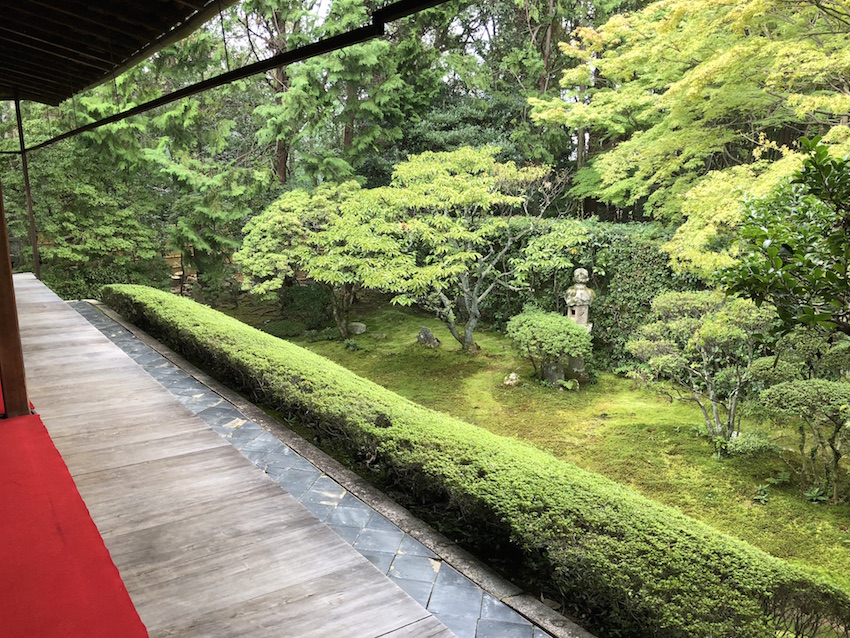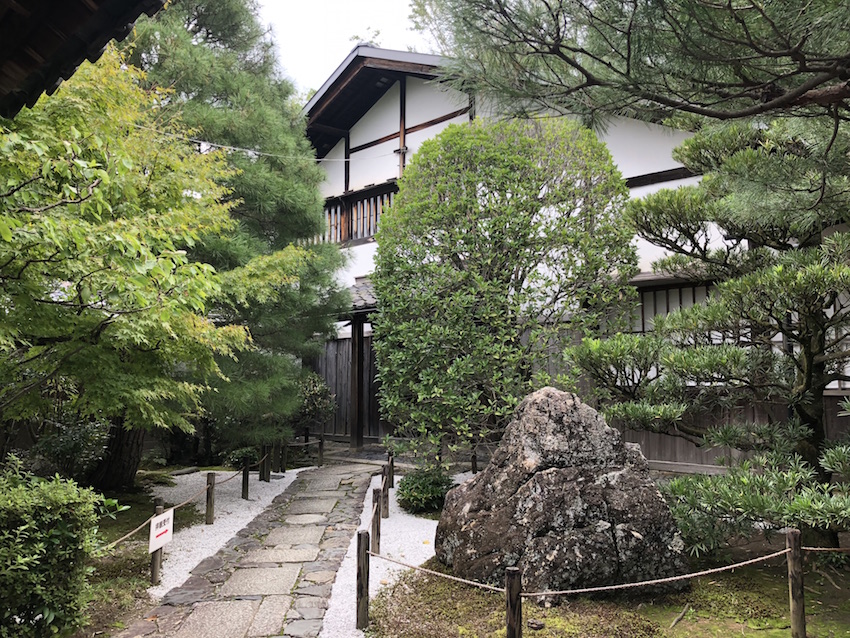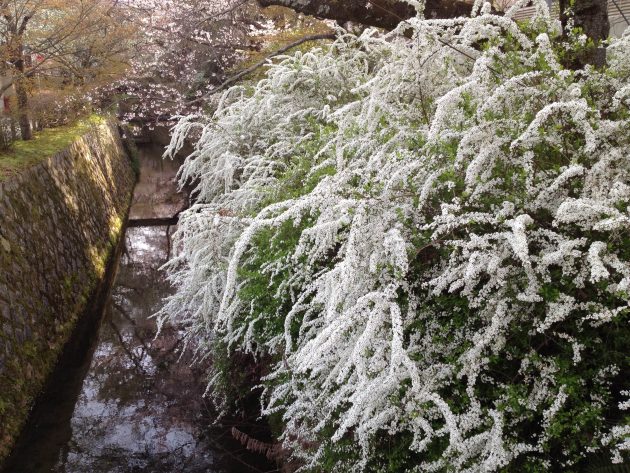묘신지 절과 게이슌인 정원 소개
묘신지(妙心寺)의 부속 사찰인 게이슌인(慶春院)은 타이조인(太蔵院)과 다이신인(大蔵院)과 마찬가지로 일반 대중에게 공개되어 있습니다. 사찰의 정원인 게이슌인 정원은 국가 명승지로 지정되어 있습니다.
교토에서 가장 유명한 사찰 중 하나인 묘신지(妙心寺)는 1337년에 건립되었습니다. 지금도 많은 부속 사찰이 남아 있어 거대한 사찰 마을을 형성하고 있습니다. 가장 북동쪽에 위치한 부속 사찰인 게이슌인(慶春院)은 오다 노부나가의 장남인 오다 노부타다의 차남인 오다 히데노리(쓰다 히데노리라고도 함)가 1568년에서 1600년경에 건립했습니다.
이후, 현재의 주지 스님의 집(본당), 승방, 서재 등 많은 건물이 이시카와 사다마사에 의해 건립되었습니다. 이시카와 사다마사는 도요토미 가문과 도쿠가와 가문을 모두 섬겼으며, 세키가하라 전투에서 최초로 적을 물리친 무사였습니다. 1600년대경에 건축된 이 건물들은 모두 교토 유형문화재로 지정되어 있습니다. 또한 주지 스님의 집의 장지 그림은 가노파 화풍의 가노 산라쿠의 제자였던 가노 산세츠의 작품입니다.
게이슌인 사원의 정원은 복잡하고 건조한 풍경의 정원으로 구성되어 있습니다.
- 이들 정원 중 유일하게 흰 모래를 사용한 '쇼조 정원'의 안뜰(사진 #4)
- 서재에서 보이는 '와비 가든' (와비 가든/사진 #5–6)
- 높은 곳에 세워진 주지스님의 방에서 발판돌을 내려다보는 '시이 정원' (시이 정원/사진 #7~8)
- 그리고 가장 큰 정원은 잔디를 활용한 것으로 유명한 '신뇨 정원'(신뇨 정원/사진 #9–11)
이 정원들은 모두 이끼로 뒤덮여 싱그러운 아름다움을 자아냅니다. 봄에는 진달래가 눈부시게 빛나고, 늦가을에는 단풍과 붉은 단풍이 어우러져 정원을 물들입니다.
방문객들이 광활한 이끼를 내려다볼 수 있는 이런 정원은 흔치 않습니다. 개인 찻집인 기하쿠안(紀博安)의 다원으로 조성된 듯한 강렬한 분위기를 자아내는 이 정원의 조성자는 공식적으로 알려져 있지 않지만, 조성 연도와 양식으로 미루어 보아 영주 고보리 엔슈(小堀遠州)의 제자이자 승려였던 교쿠엔보(敎円坊)였을 가능성이 높습니다. 저는 두 번밖에 방문하지 않았지만, 두 번 다 사람이 없어서 여유롭게 둘러볼 수 있었습니다. 다음에는 늦가을에 꼭 방문하고 싶습니다!
(저는 2014년 7월과 2018년 9월에 방문했습니다. 아래 정보는 제가 방문한 날짜를 기준으로 한 정확한 정보입니다. 최신 정보는 해당 공식 웹사이트를 확인하시기 바랍니다.)
지도
(우)616-8036 교토부 교토시 우쿄구 하나조노 테라노나카초 11
전화
+81-75-463-6578
웹사이트
묘신지 사원
입장
JR 산인선 하나조노역에서 도보 10분 (*아래 지도는 별도의 하위 사원으로 안내하지만, 조금 더 안으로 들어가세요!) 게이후쿠 전철 기타노선 묘신지역과 료안지역에서 도보 6분.


























